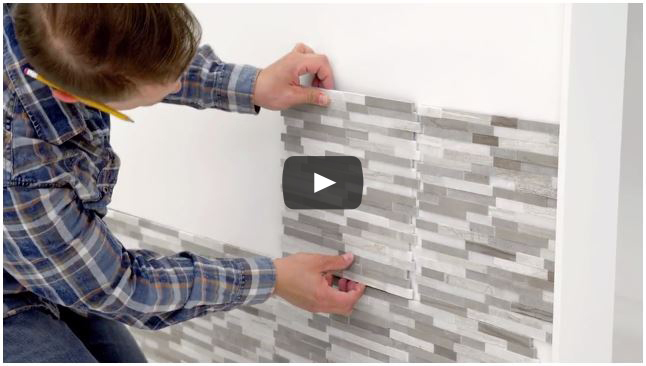

Wrong! It does not come off easily which makes it ideal for painting tiles. I didn’t tape off the toilet lid because I figured it’d wipe right off Porcelain. I taped the edges, fixtures, sink and everything I wanted to protect from the paint. I did not bother cleaning the grout since I’d be painting over it. I wiped it all down and, to improve bonding, sanded the tiles lightly with fine sandpaper. This is crucial to avoid having the paint adhere to dirt or mold. I bought the first 3 items as I already had most of these supplies on hand. Rust-Oleum Tub and Tile Kit x2 and here.Peel and Stick Floor Tiles similar here.He gave me a thumbs up figuring if didn’t turn out, we could fall back to having the drywall put in.įull disclosure: this post contains affiliate links. I checked with Hubby about my new idea to paint the tiles. I canvassed Pinterest for ideas and saw that others had resorted to painting their old tiles and tubs. After replacing the toilet, light fixture and mirror. That task with a contractor came in at about $1K and that excluded the shower stall. I spoke with hubby about removing the tiles and putting up new drywall or at least skim coating the old. And if you hadn’t figured it out, I had been tolerating it for years. I’m not one of them! Every time I looked at those pink tiles I cringed. Some people love the retro-style bathrooms. Months after that, I painted the cabinet white. Years later we had the toilet, light fixture, and mirror replaced. And for a long while that’s all that had been done.


So for starters, I removed the wallpaper. Still, I wanted to bump the master up a notch. We had the main renovated but not the master. Whatever you choose, you can’t go wrong if you go the peel-and-stick route.After having already spent a wad of cash on move-in renovations, we decided it would be unwise to continue to deplete our savings. Above all, make sure to check the manufacturer’s recommendations, as not all stick-on tile adhesives bond well with other glue. As Collier explains, “Applying permanent adhesion is an easy hack to add longevity to the tiles.” If you do choose to add additional glue, make sure to use a tile-specific adhesive such as Roberts 2057, and avoid glues like Liquid Nails that are not intended for installations. Though they’re a great option for those less “grounded” in their living spaces, most peel-and-stick floor tiles can easily last for decades, so don’t rule them out for long-term use. Any residual adhesive should be easy to tackle with a floor scraper, though it doesn’t hurt to have a remover like Goof Off on hand just in case. Begin by running a hair dryer across each tile to soften the adhesive, then slowly pull up each one, starting with the corners, using a putty knife if needed. If you change your mind about your tile or need to move on, peel-and-stick tile is just as easy to remove as to apply. Then walk on your new floor with a spring in your step. Keep a utility knife on hand to cut tiles (from the back) when needed to fit your space. Press the tiles down firmly and wipe away any residual adhesive as you go. After that? Peel-and-stick, like stir-fry, is all in the name. Some experts suggest marking your floor into quadrants to better strategize your attack. Remove any floor-level moldings so you can lay your tile flush with the baseboards.


 0 kommentar(er)
0 kommentar(er)
